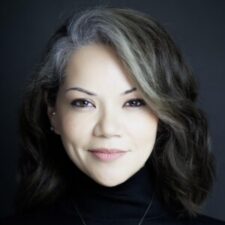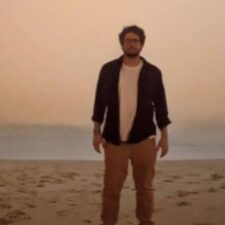You must be logged in to reply to this topic.
- Reply to this discussion topic and paste a link to your Google class folder
-
August 30, 2024 at 8:30 am #95196

Christopher SwiftParticipantPaste a link in your reply to your Google drive folder for this course. Make sure you put your first and last name in the title of the folder (see format for naming below). Within the course folder, create three subfolders: drawings, class notes, and research project. Please make sure that all these folders are shareable and can be viewed by all. I should not have to ask for permission to view the documents or folders.
MAIN FOLDER: First and Last Name, Theatre History 2280ID, D001
SUBFOLDER: Drawings
SUBFOLDER: Class notes
SUBFOLDER: Research projectPost only a single link to your main folder by replying below. Nothing more. You will never need to email your drawings, class notes, or research project elements since I will have access to all of these in your Google folder. I will be going into your folders throughout the semester to check on your progress.
Thank you for setting up your folders in this manner and posting the link to your main folder only (not to individual documents). Again, in order for me to see your work you need to set up sharing on your folder:
Right click folder
Select SHARE
Under General Access select ANYONE WITH LINK
On the right hand side of the dialogue box, select role as VIEWER
Click COPY LINK
Reply to this post and paste the link in the dialogue box.August 30, 2024 at 1:20 pm #95217
AzaelDPerezParticipanthttps://drive.google.com/drive/folders/1WCoRqT0NwO3qGONEhrqFQz3pYGEcoPhi?usp=drive_link
Good classroom notes.
The only drawing I see is the facade of the Harvey Theatre. Where are the other 5? I hope you’re staying on top of these. It’s crucial that you develop your skills over the period of the entire semester. [Updated: a couple more drawing included, but still many missing. In general, I think your pencil stroke is too gentle. I think if you work with a freer hand you can press just a little harder in order to feature the prominent lines.]
Act I: Solid report. You captured a very strong sense of the place. Good perspective drawing of the interior. I didn’t understand the second research question. You might try to find out what the building was originally built for (I don’t think it was a theater) and how it was used. MISSING: Ticket stub. Your grade is temporary until you provide this.
Act II: I think your research questions are still a bit unclear. Do you mean the demographics of the intended audience? If so, you could look at the ticket prices (may determine income), the styles of production (may determine education), subscription offers (may determine if regular theatre-goers), student priced tickets (youth), or community outreach efforts by BAM (look at neighborhood demographics). The images and architectural renderings are great. Be ready to describe these interior spaces of the theatre in Act III, since you didn’t do this in Act II (think of all the spaces of the theatre, not only the seating and stage). Finally, your bibliography is not annotated.
-
This reply was modified 2 months ago by
 Christopher Swift.
Christopher Swift.
-
This reply was modified 1 month, 1 week ago by
 Christopher Swift.
Christopher Swift.
-
This reply was modified 1 month, 1 week ago by
 Christopher Swift.
Christopher Swift.
-
This reply was modified 1 month, 1 week ago by
 Christopher Swift.
Christopher Swift.
-
This reply was modified 1 month, 1 week ago by
 Christopher Swift.
Christopher Swift.
-
This reply was modified 2 weeks ago by
 Christopher Swift.
Christopher Swift.
September 3, 2024 at 10:34 am #95306
Ignus francoisParticipanthttps://drive.google.com/drive/folders/1Pw5HuxvSETqzhbeFiYUwRTTEjzKYydAT?usp=drive_link
Thorough lecture notes for September.
Where are all your sketches? Please post ASAP. You need to demonstrate continuous improvement across the semester. [Sketches still missing!]
Act I: currently incomplete. Missing your ticket stub to the show, an interior sketch of the theater, and research questions at the end of the report. I will enter a temporary grade, but in order to get full credit please add these elements and let me know so I can re-grade. By the way, the design style of the interior is not gothic.
-
This reply was modified 2 months ago by
 Christopher Swift.
Christopher Swift.
-
This reply was modified 1 month, 1 week ago by
 Christopher Swift.
Christopher Swift.
September 3, 2024 at 1:03 pm #95317
Natalie J SalinasParticipanthttps://drive.google.com/drive/folders/1ZUh75gCWX0QQXkunAMwiTPzbmlNdxkwm?usp=drive_link
Excellent class notes through September.
Your two sketches are done with care and accuracy, but you are missing 4 others. Please post ASAP.
-
This reply was modified 2 months ago by
 Christopher Swift.
Christopher Swift.
September 3, 2024 at 3:23 pm #95323
Gabriel AguilarParticipanthttps://drive.google.com/drive/folders/1WqSEq466NePNWlT7bHfv3IZItciYq-F9?usp=sharing
Some of the most impressive lecture notes I’ve ever seen! I especially appreciate the study guides.
Where are your sketches? You only have one posted. The horizontal lines of the amphitheater do not appear to converge on a single vanishing point. [Update: most sketches included now, except the original exercise from week 1. I can see some progress in your technique. At the start, your pencil strokes were short and choppy. Keep working on longer strokes of the pencil. The first week exercise will help you with this!]
Act I: Great work, particularly the sense of the theatre residing in a liminal space and the dilapidated feeling of the interior. A couple of notes: I wasn’t sure what made you feel small and insignificant. If the facade, how? Maybe wrong choice of words. Your research questions need a little bit of adjustment in order to be clearer. 1. Do you mean how does the Harvey theatre’s relationship to the BAM organization affect its programing and audience? And how might this connect to the community? 2. The previous vaudeville house was not really “off-broadway” since it predates this non-profit history.
Act II: Excellent. Good annotations and wonderful historical photographs. It’s a shame you can’t find more information about the original productions of the Majestic. Make sure you define what “first stop on the off-Broadway” tour means for your audience.
-
This reply was modified 2 months ago by
 Christopher Swift.
Christopher Swift.
-
This reply was modified 1 month, 1 week ago by
 Christopher Swift.
Christopher Swift.
-
This reply was modified 1 month, 1 week ago by
 Christopher Swift.
Christopher Swift.
-
This reply was modified 2 weeks ago by
 Christopher Swift.
Christopher Swift.
September 3, 2024 at 5:12 pm #95324
Ronnie J. SamuelsParticipanthttps://drive.google.com/drive/folders/1Ca5qrKwjMJmAG5NhiyJ6wAXIkQ36_au_
Lecture notes: excellent! The notes evince your true participation in class.
Drawings: many are missing. Have you not had the chance to upload, or did you never begin these? Do you know where the list of required sketches is on OpenLab? You are still having difficulty with single-point perspective drawing. It would be easier for me to show you in person. Also, do the initial drawing exercise from week one. This well help.
Act I: Nice work. You need to add your ticket stub to the report (your grade is provisional and will be updated once you provide the image of the stub). I really get a sense of the area — particularly the diversity of activities and kinds of people (tourists, homeless, locals, street performers). Your research questions need a little work since they are very vague and don’t really help you find material that will help us understand the past and present communities. You don’t need to know which theaters have been renovated, necessarily, but I think it would be interesting to perhaps find out which theaters are non-profit and the number of commercial houses. For your particular theater company, maybe find out how many of their patrons are subscribers (as opposed to one-time buyers which would include tourists, etc.). About the second question, we learned a little about the development of Times Square in class. What questions can you ask that will help you understand at a deeper level? For instance, prior to the depression, what were the main forms of performance on Broadway? Can you give us a sense of the variety of forms?
Act II: Although I appreciate the work you put into the slide design, this was really not necessary. The Act III presentation was where you wanted to focus on the aesthetics of your presentation. For Act II, it would have been better if you gathered archival images. For instance, if you could locate production posters or playbill images (rather than adding your own icons), this would have been of more historical interest. Your bibliographic citations are not complete and you have not answered some of the basic questions from Act II. More text is needed. What is the audience arrangement? What are the dimensions of the stage? What about the other spaces in the theater (lobby, etc.).
-
This reply was modified 2 months ago by
 Christopher Swift.
Christopher Swift.
-
This reply was modified 1 month, 1 week ago by
 Christopher Swift.
Christopher Swift.
-
This reply was modified 1 month, 1 week ago by
 Christopher Swift.
Christopher Swift.
-
This reply was modified 1 week, 4 days ago by
 Christopher Swift.
Christopher Swift.
September 4, 2024 at 10:27 am #95333
RhneaParticipanthttps://drive.google.com/drive/folders/1mlNV4c0fbSEuNeeJmTZntP65GmEB6UlS
Class notes: great!
Drawings: your work shows a great deal of care and attention to detail. I can see, also, your progress with perspective drawing (Serlio’s stage is in perspective, the Greek proskenion is not quite right). Great job shading in the Appia design.
Act I: Your report is incomplete. I appreciate that you did a bit of research about the building itself, and you can use some of this for Act II. However, Act I is really about your impressions only. I didn’t get a sense of the kinds of buildings in the area (height, materials — how these affected your experience of the area). What you included about the area providing many opportunities for artistic experiences was good and may explain how people moved through the space (traveling to a performance or restaurant is different than traveling to work). You have not really composed a paragraph about the overall character of the area (how it is unique compared to the rest of the city) and there are no research questions. Your grade is provisional until you update this report.
Act II: Good historical images of the outside architecture. There are much better images available of the interior than what you have included. The design of the interior (and preservation) is extraordinary. The audience should get a feel of the spaces there. Remember to define your terms (what is “moorish” architecture, and what makes it “moorish”?). You have a number of images of the street that are unrelated to the building. You don’t need these. Since you never wrote research questions in Act I, there were none for you to answer in Act II. More information about MTC and their mission as a company (and how they use City Center — especially as compared to the other spaces they own in NYC) is needed. Good work on the annotated bibliography.
-
This reply was modified 2 months ago by
 Christopher Swift.
Christopher Swift.
-
This reply was modified 1 month, 1 week ago by
 Christopher Swift.
Christopher Swift.
-
This reply was modified 1 month, 1 week ago by
 Christopher Swift.
Christopher Swift.
-
This reply was modified 1 month, 1 week ago by
 Christopher Swift.
Christopher Swift.
-
This reply was modified 2 weeks ago by
 Christopher Swift.
Christopher Swift.
September 5, 2024 at 1:22 pm #95375
kahlifahParticipanthttps://drive.google.com/drive/folders/1ZKZjwL20vXP9JV5Vo9yRUZ-jRYPpBL_C?usp=drive_link
Only one day of lecture notes posted.
2 out of 6 of required sketches posted to date. Both are very good (although I note that your perspective vectors from the vanishing point are not straight but seem to bend to fit with the sketch of the amphitheater).
Act I: Very strong report, in particular your experience of the space and design inside the theater. Be careful about over using the word “culture” — it’s a very broad term and really any place in New York City has “culture”. The point is, what kind of culture (language, food, social habits, dress, etc.). Your research questions are very good!
Act II: Great report. You answered all the questions in detail. Good job discussing the style of early performances (film with live orchestra or organ). Make sure you describe exactly what Renaissance style means when you present your work in Act III. Did you find any old production or playbill posters?
-
This reply was modified 2 months ago by
 Christopher Swift.
Christopher Swift.
-
This reply was modified 1 month, 1 week ago by
 Christopher Swift.
Christopher Swift.
-
This reply was modified 1 week, 4 days ago by
 Christopher Swift.
Christopher Swift.
September 5, 2024 at 1:55 pm #95376
Andrew CernyParticipanthttps://drive.google.com/drive/folders/1O3WxBTQm9mnQqtaXDf5wE8xJ9uSWdfJ1
Good lecture notes through Noh theater… missing everything after.
Only 2 of 6 drawings posted. Noh drawing is very good. The amphitheater needs more detail and the vertical lines are not consistently at a 90 degree angle from the bottom of the page.
-
This reply was modified 2 months ago by
 Christopher Swift.
Christopher Swift.
September 8, 2024 at 10:14 pm #95423
EvyatarParticipanthttps://drive.google.com/drive/folders/1jduETkEuC-m1HPqATJ4IHF2yBA0brizx?usp=sharing
Very few lecture notes
Only 2 out of 6 required sketches to date. The two are very carefully rendered. [still missing!]
Act I: the strongest aspect of the report are the drawings. I particularly like the neighborhood grid, with color coding. Your first research question is good, but the second needs work. It is too vague. Overall, I think your written responses to the prompts are underdeveloped. Although accurate, I don’t get a strong feeling of the place. What makes it absolutely unique? More detail would have made the report stronger.
Act II: Excellent report. I’m looking forward to hearing you discuss the plans and elevations in a bit of detail since you are an Arch Tech student. What do the numbers on the first elevation signify? Do you know how much the renovation cost, and exactly what needed to be replaced or refurbished in 1987? More information needed about the stage space in relation to the proscenium. Isn’t there a way to stage productions in front of the proscenium? Do productions sometimes create a thrust arrangement? Just things to think about for the final report.
-
This reply was modified 2 months ago by
 Christopher Swift.
Christopher Swift.
-
This reply was modified 1 month, 1 week ago by
 Christopher Swift.
Christopher Swift.
-
This reply was modified 1 week, 4 days ago by
 Christopher Swift.
Christopher Swift.
September 9, 2024 at 12:18 am #95424
Mikebedon1Participanthttps://drive.google.com/drive/folders/13D7qOw_KOMVnxUJqbo-_Mac7Ib9iqQvc?usp=sharing
Thorough lecture notes.
Missing a number of drawings, so its difficult for me to see improvement over time. Please post all drawings ASAP.
Nothing has been added to your folders since I last looked.
Act I: Excellent report, overall. You really captured the bustle and nightlife of the area. Many of the food and entertainment venues are reasonably priced, again underscoring your conclusion about the young crowds. You should think about how the theatre might want to cater to this population (also, students). Is the theater non-profit or commercial? Your first research question is good, but the second is quite general. Perhaps hone it to focus on the life of the neighborhood when the theatre was built. Was it the same or have things changed?
-
This reply was modified 2 months ago by
 Christopher Swift.
Christopher Swift.
-
This reply was modified 1 month, 1 week ago by
 Christopher Swift.
Christopher Swift.
-
This reply was modified 2 weeks ago by
 Christopher Swift.
Christopher Swift.
September 9, 2024 at 11:00 pm #95432
Christopher SwiftParticipantFor Cassandra Rama:
https://drive.google.com/drive/folders/1ew5_fIxPESxiyu3aXjmk8X8eg6LX1Ehf
Class notes: good
Drawings: overall, good work. I think your line strokes could be heavier many times. This will come with more confidence. Perhaps allow yourself to be more bold and quick with your drawing. You are missing a number of drawings.
Act I: very good work. A couple of notes. You say that the infrastructure is well-kept, but in the photograph you took there is construction going on. Isn’t there construction all around Lafayette? You also neglected to discuss the residential side streets, which are very different. Finally, your research question about how the theater adapts to the changes of the neighborhood currently, I think you need to be more specific. Do you mean do they change the kinds of plays offered, or the manner in which they market the plays?
Act II: Strong report. What does “european style theater” mean exactly? Does this mean that productions from Europe often played there? Or was the architecture inspired from something from Europe? Great historical photograph of the street, which shows a number of other active theaters. Can you find out any more detail about how the neighborhood transformed from a retail district to a theatre district? Obviously this changed in the 1960s – 1980s when it was abandoned. Make sure you describe your images and plans in detail when presenting Act III. Your bibliographic citations are missing information.
-
This reply was modified 1 month, 1 week ago by
 Christopher Swift.
Christopher Swift.
-
This reply was modified 1 month, 1 week ago by
 Christopher Swift.
Christopher Swift.
-
This reply was modified 1 week, 3 days ago by
 Christopher Swift.
Christopher Swift.
September 10, 2024 at 1:36 am #95437
Yahir RamirezParticipanthttps://drive.google.com/drive/folders/16EVYQIP6e1aNSYG-UZ3rCtcMdK1aJUQ3?usp=drive_link
There are no folders on this link. Please create folders and deposit work ASAP. Still empty as of Dec 15.
-
This reply was modified 2 months ago by
 Christopher Swift.
Christopher Swift.
-
This reply was modified 1 week, 4 days ago by
 Christopher Swift.
Christopher Swift.
September 14, 2024 at 11:36 pm #95526
Anthony RomeroParticipanthttps://drive.google.com/drive/folders/1dknwodWHap5W3fQRXZlQn0LRktJLKQcR?usp=sharing
https://drive.google.com/drive/folders/1dknwodWHap5W3fQRXZlQn0LRktJLKQcR?usp=sharing
-Anthony Romero
Classroom notes: excellent!
Drawings: Harvey Theatre is carefully rendered and your tragic stage is excellent. The Appia image has real texture.
Act I: Parts of your report are excellent, particularly your description of the character of the place (old resisting change). Your street grid drawing is also very good. I thought some of your descriptions needed fleshing out or more specificity. I wouldn’t make a comparison like “not a large as typical NYC” (or the like). There is no typical NYC neighborhood. It’s interesting that you say the residential area feels like the 1980s — of course it could go even further back since those brownstones and single family units were built from the turn of the century through the 1940s. Your research questions need work. 1. Who is “you”? Do you mean the directors of BAM? Why did they choose to renovate that theatre? That’s a very good question that you could pursue. I don’t understand your second question. I don’t think one could expand the theatre — the basic structure would be impossible to move (stage, proscenium, audience areas).
Act II: Very good. Where did you get the isometric renderings!? I’ve never seen them before. They very effectively convey a feeling of the space. You also did in your descriptions, which were excellent in detail. It does seem odd that you didn’t have leg room since there was a reduction in the number of seats in the 1987 renovation. Very good point about the amphitheater design. This is fairly unique for an indoor theatre in NYC. More historical information is needed (kinds of productions originally done there). I was a little confused by your points regarding commercial vs. non-profit theater. I hope you can clarify when you present Act III.
-
This reply was modified 2 months ago by
 Christopher Swift.
Christopher Swift.
-
This reply was modified 1 month, 1 week ago by
 Christopher Swift.
Christopher Swift.
-
This reply was modified 1 month, 1 week ago by
 Christopher Swift.
Christopher Swift.
-
This reply was modified 1 week, 3 days ago by
 Christopher Swift.
Christopher Swift.
September 15, 2024 at 4:45 pm #95543
LeslieParticipanthttps://drive.google.com/drive/folders/1UP5j3Ft2949tS-Eg-0HM_WVqLwz9In8D?usp=sharing
There is only one drawing deposited here. There’s not much I can comment on. Please deposit the others ASAP. No additions as of Dec. 15
-
This reply was modified 2 months ago by
 Christopher Swift.
Christopher Swift.
-
This reply was modified 1 week, 4 days ago by
 Christopher Swift.
Christopher Swift.
-
This reply was modified 2 months ago by
You must be logged in to reply to this topic.


